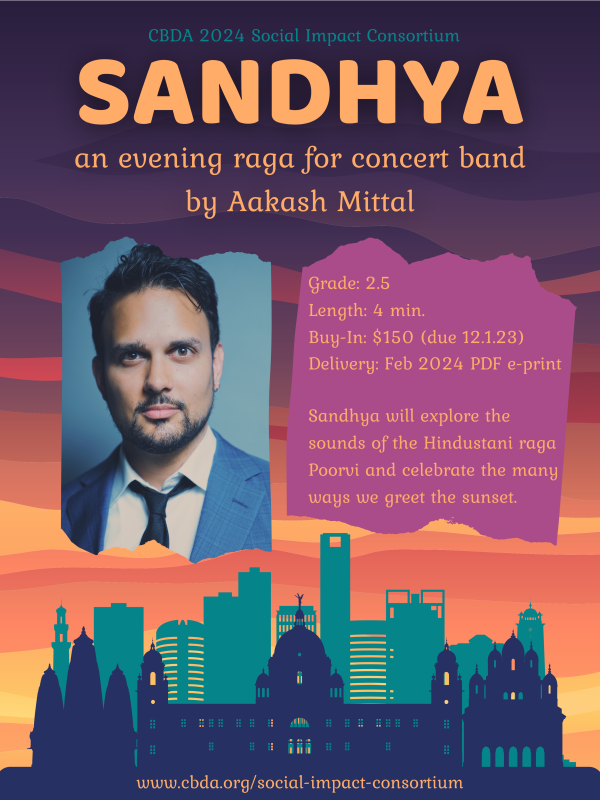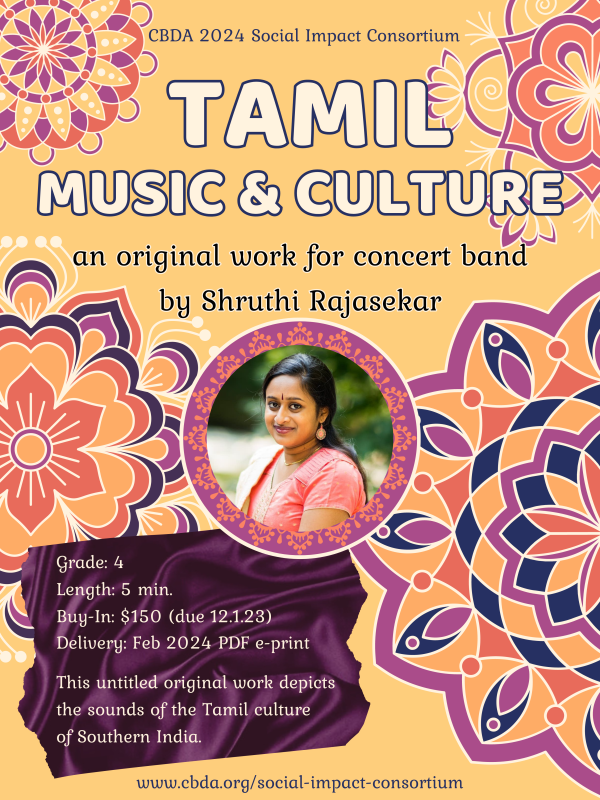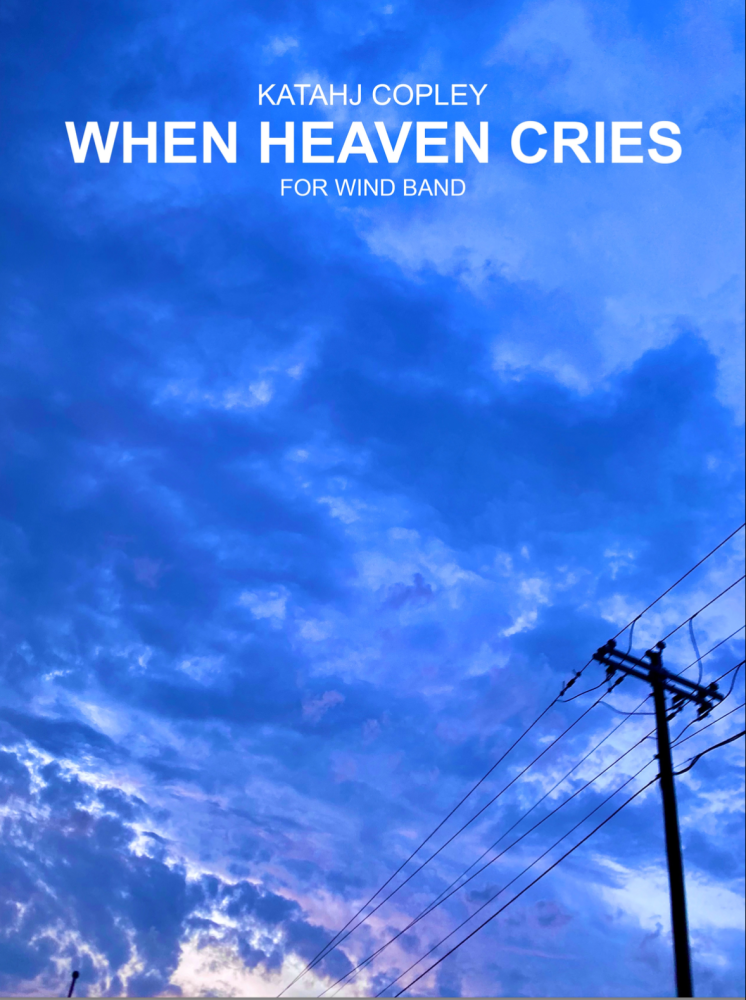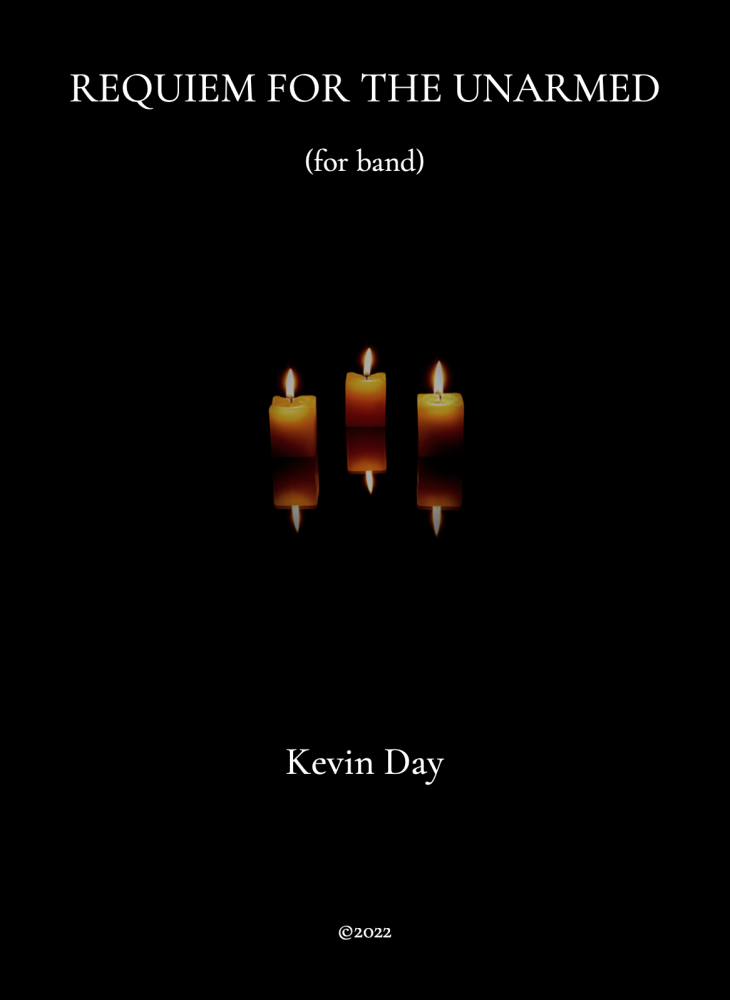
Sandhya (Aakash Mittal)
Explores the sounds of the Hindustani (North Indian) raga Poorvi with the colors and instrumentation of the concert band. Rather than imitate the traditional performance format of a Hindustani raga, the piece will incorporate sounds of modern Indian life. The soft ringing textures of bells in Pushkar, Rajasthan and the rhythmic backbeats omnipresent in Kolkata’s night clubs will be interwoven with melodic and harmonic material seeded by raga Poorvi. Sandhya will celebrate the many ways we greet the sunset ranging from Indian pooja rituals, to all night music festivals and the meditative pathos of the evening raga.
Grade Level: 2.5
Duration: 4 min.
Instrumentation: Standard Concert Band
(optional: oboe, bassoon, bass clarinet, bari sax, horn, string bass, tabla)

V.O.C.: Helmsman of the Sea (Shruthi Rajasekar)
This original work, yet to be titled, is based on the culture and musical heritage of the Tamil people of Southern India. The Tamil people represent ~6% of modern-day India (concentrated in Tamil Nadu and Puducherry) and sustain their own unique language, religious and cultural practices, and music in the carnatic tradition.
Grade Level: 4
Duration: 5 min.
I am Enough – Marie Douglas (Grade 3)
Difficulty: Medium-Easy
Duration: ca. 5’00
Instrumentation: Concert Band
I am Enough was commissioned by the California Band Directors Association 2023 Social Impact Consortium. The piece is a two-movement piece for wind band on the topic of mental health. The piece is 2.5, which makes the work easily accessible to a variety of ensembles.
Written in 2022, the piece is centered around teen mental health and wellness with each movement telling the story of a fictional teen overcoming their struggles with ADHD/Sadness and Anxiety/Fear, respectively. I Am Enough travels through genres and regions of the African diaspora and Latin America, mixing in R&B, Southern Hip-Hop, and Mexican Folkloric vibes.
Music-based Social Emotional Learning Curriculum
This resource was created by the 2023 cohort of graduate music therapy students at University of the Pacific under the supervision and editorial guidance of Dr. Eric G. Waldon. Contributors include Terrell Liedstrand, Kathryn E. Trujillo, Georgia M. Agerton, Janine L. Alcordo, Richard Fiallos, and Benjamin C. Tudor. The experiences and observations of consortium member band director were taken into consideration during development of the document.
Pre-Work for Teachers
Teachers, It’s Necessary to Talk About Race Article
– Why are we engaging in these conversations in our classroom and what impact can this have for our classroom community?
Are You Prepared to Talk About Race? Article with resource links
– Starting with self. Am I prepared to facilitate these conversations? Which resources should I plug into to fill in my own learning before turning to teaching?
Facilitating Critical Conversations with Students Resource Guide
– What norms and expectations need to be set in advance so we can all engage in respectful conversations?
Active Listening Article
– What is active listening and how might we practice active listening before we get to these “hot topics”?
Setting Your Classroom Culture Learning Plan
– How can I design my classroom as an inclusive space for all students?
Designing Classroom Rituals Guide
– How can we ritualize the beginning and end of our class so students feel safe, seen, and supported, especially as we tackle “hot topics”?


Identity Lesson Plans:
After classroom norms, routines, and rituals are set and active listening has been practiced, these lessons offer an entry point to begin talking about race by asking students to reflect on their own identity.
Wind Band Compositions Informed by Social, Political, and/or Environmental Events
It is often stated that if you want to gain an understanding of the dynamics of a particular time and place in any given culture, you need only look at the arts. The will inform you of wartime, peace, tragedies, triumphs, who was in power. All of that information can be found in the arts. This includes all disciplines within the arts. If we also embrace the idea that art reflects life, then it is only natural that music serves as a perfect vehicle for artists to express social conditions. Artists in practically every genre has used their skills to tell stories about some facet of life where music could better offer the expressions of a marginalized people.
Here’s a short list of artists who have used their art to tell stories addressing some facet of social injustice.
Social Impact Songs: The Influences of Music
***Teachers please vet the music BEFORE playing it for your students regardless of the recommended level listed.***
